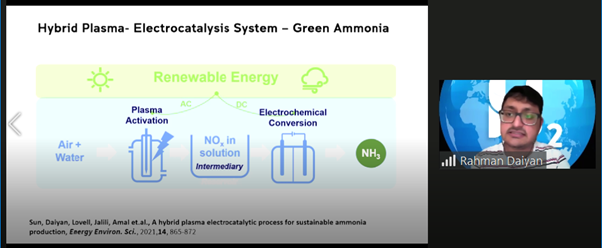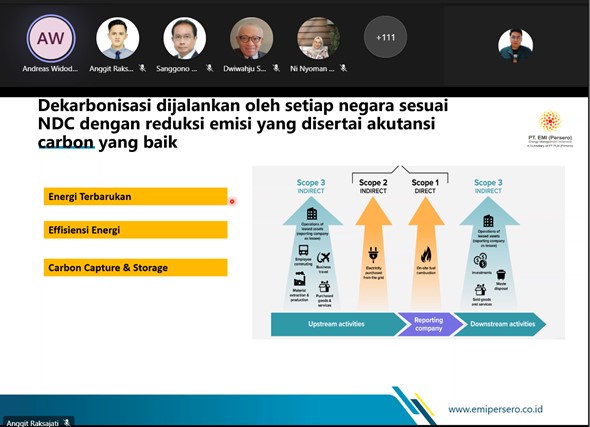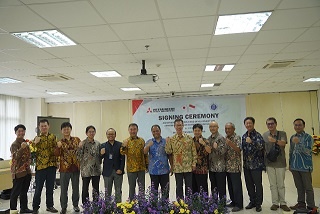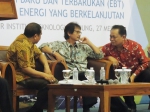Make a Meet with Power-to-X: Innovation to Increase Efficiency of Renewable Energy Resources

BANDUNG, itb.ac.id – The Undergraduate Program in Chemical Engineering of Institut Teknologi Bandung (ITB)’s Faculty of Industrial Technology organized an international guest lecture for the Photoelectrochemical Technology and Photocatalysts course (TK4309) with the University of New South Wales, Australia last Monday (18/4/2022).
The lecture’s topic of discussion surrounds the development of “Power-to-X,” which enhances various renewable energy resources. Dr. Rahman Daiyan of the University of New South Wales became a featured source person for this English-taught lecture.
Power-to-X entailed several electrical conversion pathways, energy storage, and excess electrical power reconversion. Its conversion technology allows power extraction from the electrical sector for uses in another sector, such as transportation or chemical materials, and possibly utilizes the power available from extra investments in energy generation.
“The technology and processing sequence of Power-to-X converts a range of renewable energy including wind, solar, and water to various forms of chemical energy medium namely H2, CO, NH3, and H2O2, which later become an assortment of products such as medical products, fuel cells, and chemical industry materials,” explained Dr. Daiyan.
In addition, the Power-to-X technology has been endorsed as the ultimate form of optimum renewable energy. By way of illustration, the application of Power-to-X will lead to many benefits such as decentralized and decarbonized production, seasonal energy conservation, as well as a stabilized network.
Unfortunately, the development of a highly efficient technology also incurs a higher cost. Moreover, the sophistication of research facilities and the further development of electrolyzers also increase the overall cost.
“Therefore, improving catalyst performance and efficiency becomes the key point in reducing expensive production costs,” stated Dr. Daiyan.
In order to realize the said objective, endeavors of different catalyst development strategies were conducted, comprising facet tuning, defect engineering, direct electrode preparation, coordination tuning, and carbon support.

All manner of renewable energy is processed with electrochemical technology - particularly, plasma activation and electrochemical conversion before their adoption to various kinds of applicable energy. The electrochemical method is based on the redox reaction which combines the oxidation and reduction process. Meanwhile, the electrochemical system forms from electrochemical reactions occurring in electrochemical cells.
Electrochemical cells can be divided into two types: galvanic cells and electrolytic cells. Galvanic cells produce electricity from spontaneous reactions. On the other hand, electrolytic cells employ electricity to allow the occurrence of non-spontaneous reactions.
To realize the development of this technology, Dr. Daiyan also participates in the GlobH2E movement which strives for innovative research. The movement also serves as a training center for capacity and capability building concerning the effective, latest hydrogen energy development, based on engineering principles and business skills to facilitate and support the Australian industrial transformation in utilizing hydrogen power plants.
Accordingly, if this technology were to be developed and realized further, many more renewable energy-based products will be manufactured, especially hydrogen energy. Expect fuel-based heater and transportation and abundant reserves of enhanced energy, as well as green steels and green chemicals.
Reporter: Yoel Enrico Meiliano (Food Engineering, 2020)
Translator: Firzana Aisya (School of Life Sciences and Technology, 2021)

scan for download








